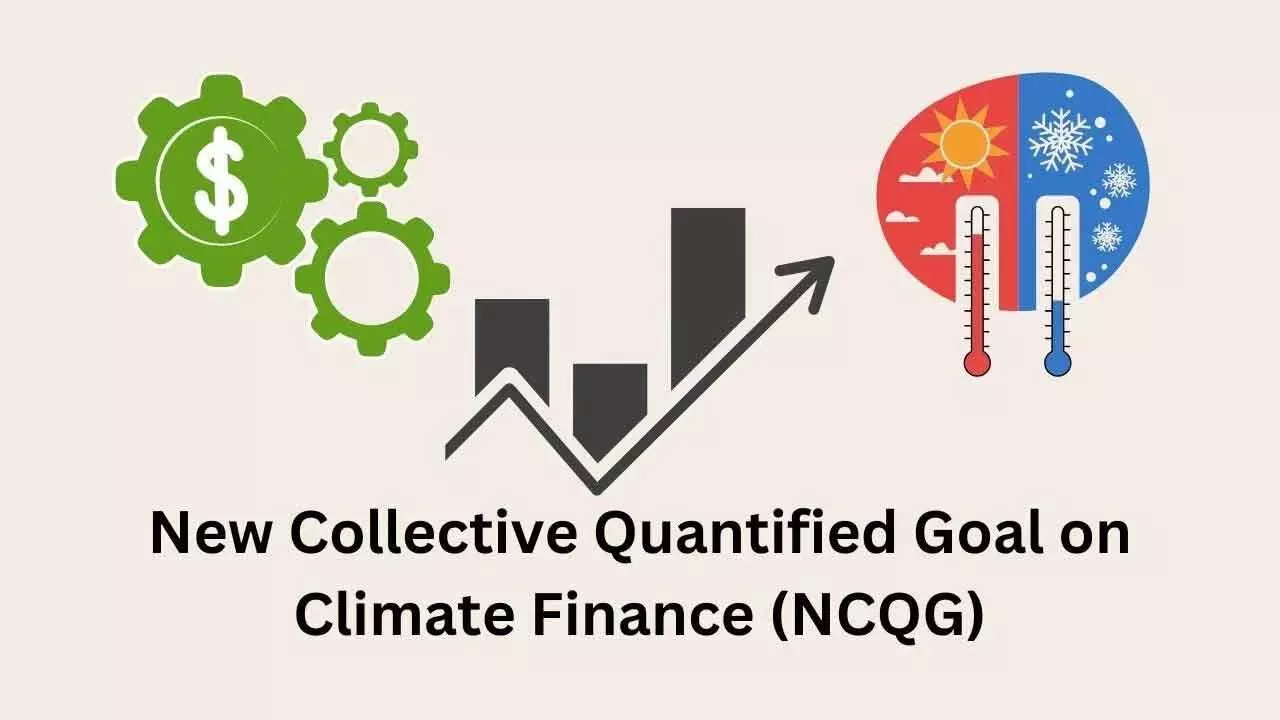The World Hopes For A New Collective Quantified Goal Breakthrough At COP 29
Subsequent to Covid-19, the low and less developed countries are trapped in heavy debts
The World Hopes For A New Collective Quantified Goal Breakthrough At COP 29

According to ‘The Commonwealth’, adopting a strong NCQG at COP 29 is crucial to set the foundation for rebuilding and strengthening trust in the international climate finance system
In a welcome development that is relevant to the entire world, the new collective quantified goal on climate finance is being deliberated with purposeful dexterity in COP 29 underway at Baku to achieve its objective ‘In solidarity for a Green World’.
The earlier agreed annual amount was $100 billion goal towards taking up climate action in developing countries. This is up to next year.
Now there is a compelling need to arrive at the New Collective Quantified Goal (NCQG) in climate finance, which is the key element of the 2015 Paris Agreement. The intention is to set up new finance targets to support developing countries, including low and less developed countries. in their climate action post-2025.
In the given circumstances, NCQG is essential and needs to be much higher as the mitigation and adaptation finance required by developing countries are much more. Subsequent to Covid-19, the low and less developed countries are caught in heavy debts, which itself needs restructuring. This is also to address mitigation and adaptation measures and to increase investment in alternative energies so as to reduce dependence on fossil fuels. They also funding for recovering from climate change incidents that are leading to further financial losses.
This new goal for climate finance builds on the previous commitment made at the Copenhagen Climate Summit in 2009 where developed countries pledged to mobilise $100 billion per year by 2020 to address the needs of developing countries.
There is a need for greater acceptance from developed countries, who are majorly responsible for most of the past greenhouse gas emissions that have caused climate incidents. This has adversely impacted some nations and the solution is extending greater financial as adaptation and mitigation measures in developing countries cannot be delayed. The developed nations must collectively move towards alternative energy and other mitigation steps to achieve net zero emission targets by 2050. There is also the goal of reducing temperatures to 1.5°C.
The current study and assessment indicate that the steps envisaged will not suffice because the determined contributions of member nations because the temperature levels could be more than the target level, which will add to the misery and hardships of the vulnerable nations.
This is where is the importance of NCQG comes to the fore vis-à-vis addressing the persistent gaps in climate finance by providing a more realistic and ambitious funding framework. NCQG can be arrived at by a global partnership and by higher trust and cooperation among nations, which will be the guiding principles for successfully implementing the Paris Agreement.
Not only is a threadbare discussion on NCQG is important at COP 29 but also the need to arrive at a consensus at higher financial commitments to take care of the current requirement of greater funds towards climate action in developing countries. This will help support their needs and priorities towards climate action and climate resilient solutions, which also have to be scaled up by way of finance from public and private sector sources. One of the estimates by UNFCCC's standing Committee on Finance is at $5.8-$5.9 trillion cumulatively by 2030. As against the earlier agreed sum of $100 billion, the current estimation is at $one trillion that is required annually for helping developing countries towards climate action.
Most of the developing countries call for equity and inclusivity to address the priorities and evolving needs of developing countries. According to ‘The Commonwealth’, adopting a strong NCQG at COP 29 is crucial to set the foundation for rebuilding and strengthening trust in the international climate finance system. It is hoped that there will be unanimity among the developed countries to arrive at the ambitiously carved out ‘New Collective Quantified Goal’ as this can enable funding crisis-ridden developing countries. It should not be forgotten that this sort of support system is also in the interest of developed countries. Moreover, the developing countries can take concrete steps for a greener and a more resilient future.
India calls for $1.3 trillion annual climate finance from developed countries. Echoing the sentiments of all likeminded developing countries at the high-level Ministerial Climate Finance topic at COP 29 summit the additional secretary, Union Environment Ministry, Naresh Pal Gangwar asserted that differentiated responsibilities and respective capacities must form the basis for a strong outcome on the New Collective Quantified Goal at COP 29. Greater support is the need of the hour given the myriad climate incidents that are happening and the suffering is felt especially in the global south. It is therefore required to have high ambitions on climate action and there should be a commitment to provide and mobilise at least $ 1.3 trillion every year till 2030, through grants, concessional finance and non-debt inducing support catering to the evolving needs and priorities of developing countries to achieve greener future.
The entire world is eagerly awaiting a more feasible solution from COP 29, which depends upon the support of all major developed countries.
(The author is former Chairman & Managing Director of Indian Overseas Bank)

